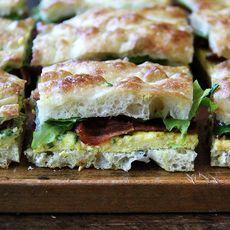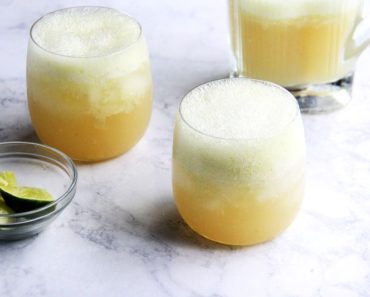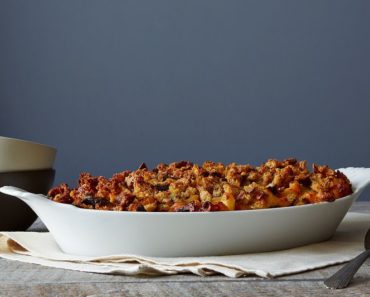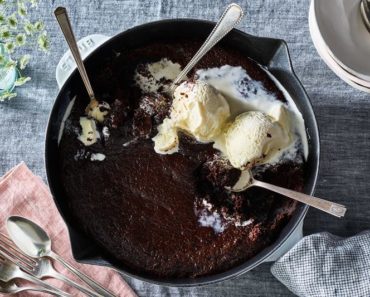Ever since making Ali Slagle’s sheet pan eggs in January and Justin Chapple’s bacon weave shortly thereafter, I’ve been dreaming about layering the two on sheet pan-baked focaccia, assembling a giant slab sandwich, cutting it into squares, inviting over the neighborhood, and proudly presenting my made-entirely-on-a-sheet-pan breakfast for a crowd.
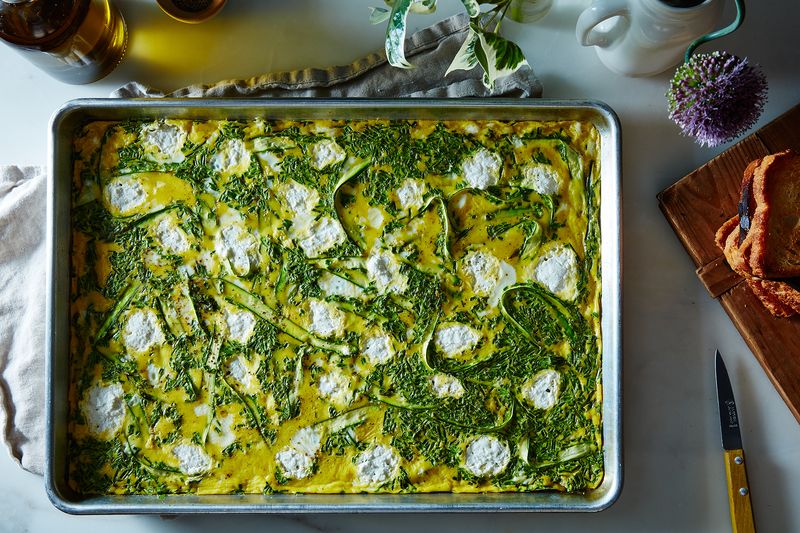
by Ali Slagle
The dream came nearly true last weekend, and I learned a few things in the process, namely that a recipe calling for a sheet pan three times over requires a solid game plan, especially if you own only two sheet pans and one oven. But with a little organization, a slab breakfast sandwich can materialize seamlessly, and it’s especially well-suited for a crowd, perhaps for a gaggle of fathers this weekend. What more says, “I love you, Dad!” than bacon, eggs, and toast? (Sarah, I hear you, snoooooze.)
Here’s Your Game Plan
1. Make the focaccia first. To lighten your load on Sunday morning, you can prepare the dough Saturday evening, and bake the focaccia first thing in the morning. There are two ways to do this:
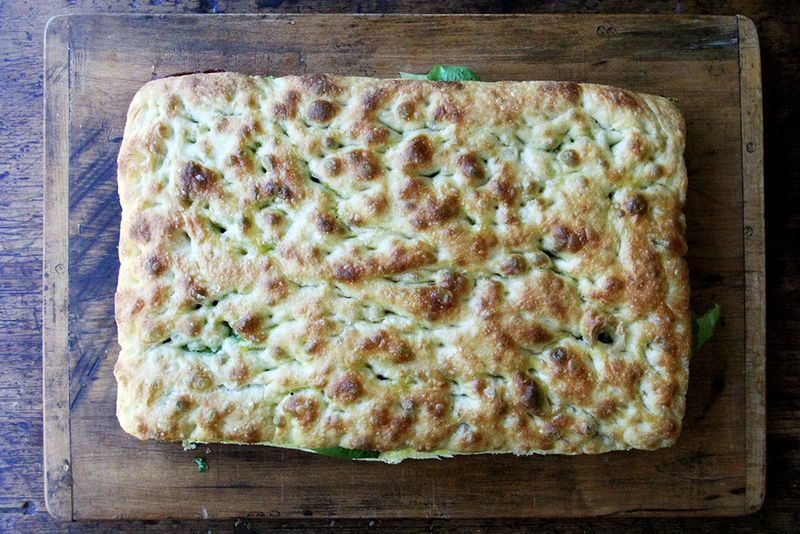
Photo by Alexandra Stafford
- If you have space for a bowl in your refrigerator, you can let it have a slow rise in the fridge. In the morning, a few hours before you plan to serve the sandwiches, remove the bowl and dump the dough out onto an oiled sheet pan. Then follow the recipe as directed.


Photos by Alexandra Stafford
- If you don’t have space for a bowl in your fridge, you can allow the dough to rise at room temperature overnight on your counter (8 to 10 hours or so). Then proceed with the recipe in the morning. (See notes in the recipe, below.)
But which is best?
The fridge dough takes longer to warm up once removed from the refrigerator, and thus requires a bit more (hands-off) time, but it always turns out especially nice and pillowy. The counter dough will be ready to shape, stretch, and bake nearly right away, though the crumb won’t be as light and airy.

Photo by Alexandra Stafford
You could also bake the focaccia a day ahead of time, though it’s best eaten when it’s freshly baked. If you bake it a day ahead, warm it in oven briefly—you could do this while the eggs bake.

Photo by Alexandra Stafford
2. Cook your bacon. A sheet pan is an excellent tool for cooking bacon—it frees up your stovetop, cooks the bacon evenly without having to flip it, and makes zero mess (aside from splatters inside your oven, which no one sees). If you do the Justin Chapple bacon weave, which makes for an especially bacon-y sandwich, know that you will need about 2 pounds of bacon (and two sheet pans). If you don’t care about getting bacon in every bite, you can use 1 to 1.5 pounds of bacon, which will fit snugly on one sheet pan. For ease, I’ve been doing the latter (though I highly recommend the bacon weave for smaller-scale endeavors, such as your first BLT of the season).

3. Make your eggs. You don’t want the eggs sitting around for very long after they’ve been cooked, so it’s best to cook them last, transfer them to the focaccia, top them with the bacon, and serve them immediately. I’ve seasoned them simply here with finely chopped chives and Cheddar cheese, but as Ali Slagle notes in her post, you could add any number of vegetables (shaved asparagus, peas, caramelized onions), meats (rendered bacon, prosciutto, or pancetta), herbs (thyme, basil, parsley), and cheese (Gruyère, Fontina, goat).
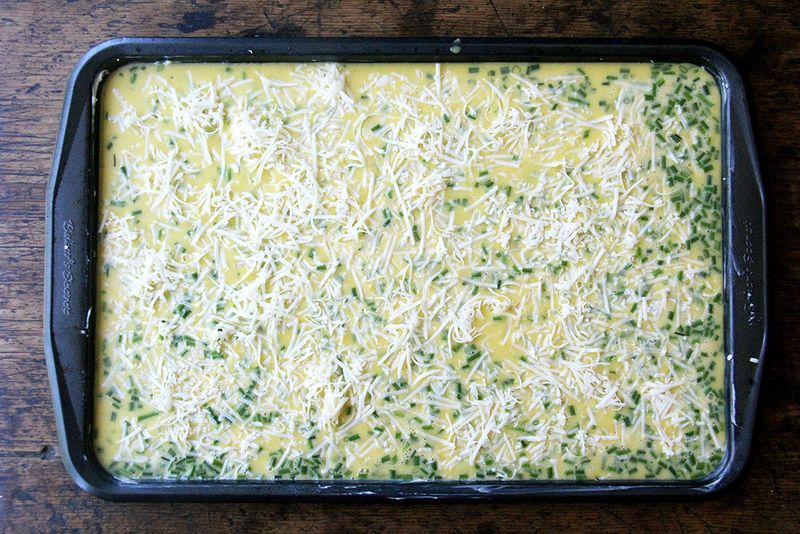
Photo by Alexandra Stafford
A Few Tips
- If you use parchment paper for the focaccia, the pan emerges from the oven only slightly greasy and can be wiped out, greased, and used for the eggs without washing in between, thus saving you having to use three sheet pans.

Photo by Alexandra Stafford
- I bought a nonstick sheet pan from my grocery store in desperation one day, and while I don’t like using it for anything I want to get nicely caramelized, it works beautifully for sheet pan eggs. When the pan is buttered well, the eggs, with a little prodding, slide right out. It also works just fine for the focaccia.
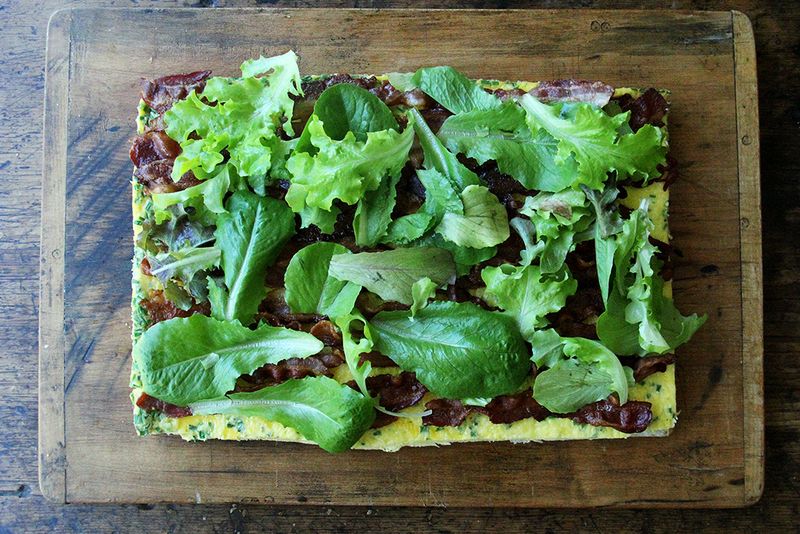
Photo by Alexandra Stafford
- Another way to eliminate one sheet pan is to omit the bacon and make a vegetarian breakfast sandwich: Sauté vegetables, such as slivered bell peppers, onions, and mushrooms, and spread them over your sheet pan-baked eggs.
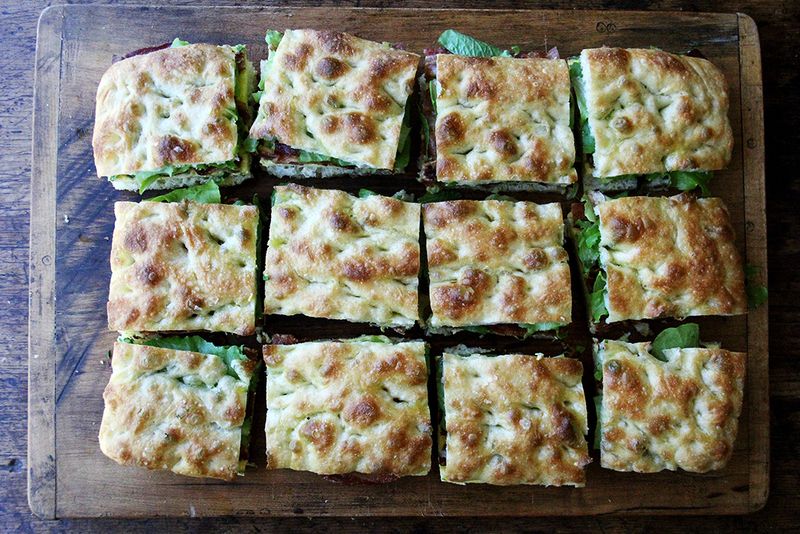
Photo by Alexandra Stafford
- You could also simply buy the bread (the horror!) and layer it with your sheet pan eggs and bacon. Similarly, you could scramble the eggs stovetop (the horror!), then spread them over your sheet pan-baked focaccia.
Sheet Pan Bacon and Egg Breakfast Sandwiches with Overnight Focaccia
Overnight Focaccia
-
4
cups (512 g) all-purpose flour -
2
teaspoons kosher salt -
1
teaspoon instant yeast -
2
cups lukewarm water, made by mixing 1/2 cup boiling water with 1 1/2 cups cold water -
4
tablespoons olive oil -
sea salt
Egg Sandwich
-
1 to 1.5
pounds bacon -
12
eggs -
kosher salt and pepper to taste
-
splash cream
-
4
ounces grated Cheddar cheese -
1/4 to 1/2
cups finely chopped chives -
lettuce
-
hot sauce, mayonnaise, and other condiments for serving
(via Food52)

